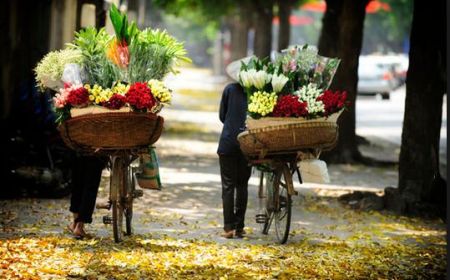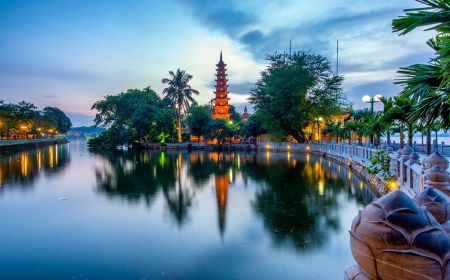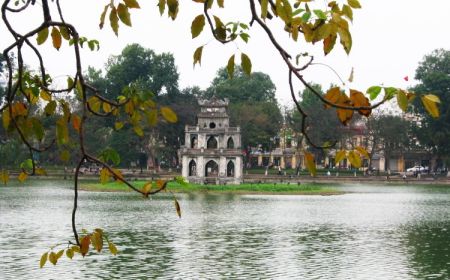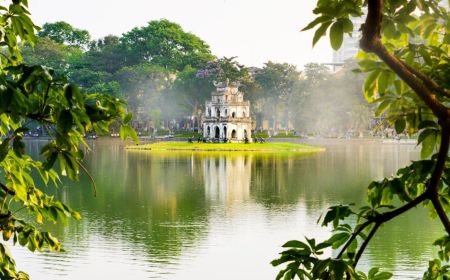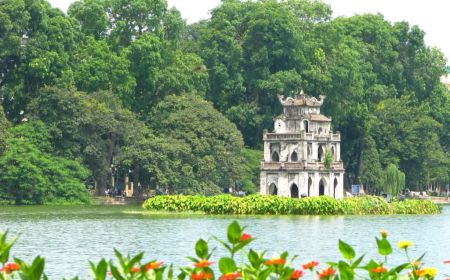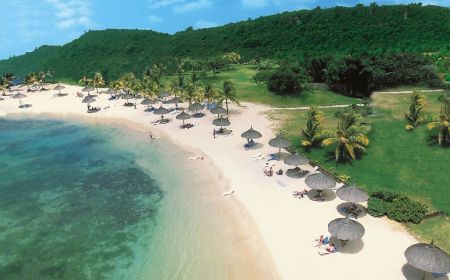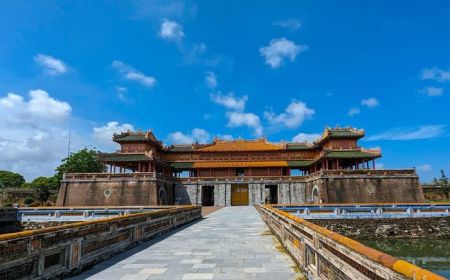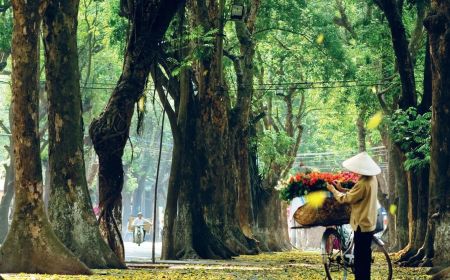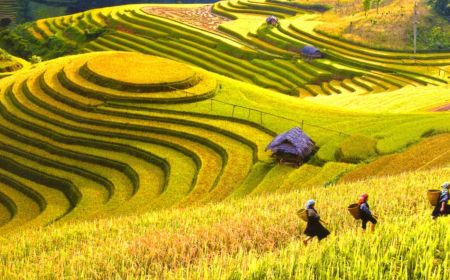1. Pack for the climate
Perhaps the most important consideration when planning a trip to Vietnam is the weather. The south of the country sits firmly in the humid tropics, but the climate becomes increasingly temperate as you head north, and the highlands around Sapa can be downright chilly in winter. If you plan to visit both halves of the country, bring some clothes for the cooler highlands as well as the steamy Mekong Delta.

Vietnam is soaked by the southwest monsoon from May to September and the northeast monsoon from October to April, so check the weather in the areas you plan to visit. Trekking in the northwest and boat trips in Halong Bay, for example, can be a soggy experience in July and August, but this is a great – if popular – time to bask on the central beaches. Even in the rainy season, it doesn’t rain all day, every day, so bring a raincoat or umbrella and make the best of the smaller crowds and lower prices.
3. Get your jabs
As with anywhere in the tropics, there are tropical illnesses to be aware of in Vietnam. See your doctor at least a month before you travel to get up to date with vaccinations, and arrange anti-malarial medication if you plan to visit rural areas.
Mosquitoes can also carry dengue fever, so bring repellent. On arrival, avoid drinking tap water and use antibacterial hand gel to reduce the risk of stomach bugs; a medical face mask can reduce the risk of respiratory infections and help with pollution in big cities.
4. Respect religious spaces
When visiting Buddhist, Hindu, Confucian and Taoist temples, churches and other religious buildings, dress respectfully – it’s best to cover your legs and upper arms, and you may need to take off your shoes and hat to enter. Never touch anyone on the head, and avoid pointing the soles of your feet towards another person or any Buddhist statues – both signs of disrespect in Buddhist culture.

5. Don’t lose face
As in many other parts of Asia, Vietnamese culture places considerable emphasis on "saving face" – in other words, avoiding situations that might cause individual or collective loss of dignity and respect. Public outbursts and arguments can cause everyone involved to lose face, so keep a sense of perspective, and try not to get angry when confronted by inconveniences as you travel.
6. Do right with your chopsticks
There are several taboos associated with using chopsticks. Leaving your sticks sticking upright in a bowl of food is considered unlucky, as it resembles offerings of incense sticks made for the dead. Using chopsticks of uneven length is also frowned on, as is tapping your bowl with your sticks (associated with beggars requesting alms). If you eat in a group, use clean chopsticks (or the reverse ends of your own chopsticks) to pass food to others.

7. Eat like a local
Food is practically a religion in Vietnam, but locals focus their energy on the evening meal, where multiple dishes are shared between diners, with the whole family getting involved. Rather than ordering a single main course, choose a spread of dishes for the table and sample a rich mix of flavors and textures. If you need a boost between meals, street food snacks can be found everywhere, or just grab a nutritious sinh tố (fruit shake) or a cup of local drip-brewed ca phe (coffee).
8. Don’t go overboard with displays of affection
Public displays of affection are not a big part of Vietnamese culture, for couples of all orientations. Kissing, hugging and even holding hands in public can raise eyebrows, so tone down the romantic gestures while you’re in the country.
9. Be a respectful photographer
Always ask before taking photographs of people, particularly in minority villages. Many people find it intrusive, and by asking first, you’ll know if people are comfortable being included in your travel photos. In tribal areas, some villagers ask for payment for photos, which is fair enough... how would you feel if strangers kept sticking a long lens into your front porch?
10. Don’t get dragged into Vietnamese politics
Another time to think twice before pulling out your camera is during public demonstrations and political rallies. Play it safe – steer clear of political gatherings and avoid conversations about politics with local people.
11. Be a fair bargainer
Haggling is a fact of life in Vietnam, particularly at markets and souvenir shops, and you may pay over the odds if you accept the first price suggested. However, bargaining should never be a confrontational process – treat it as a game and counter the starting price with a lower counter offer, and see how the seller responds. With a bit of back and forth, you should reach a mutually acceptable price – and if you don’t, you can always decline politely and try another vendor. There’s little point haggling over tiny sums of money – if you pay 5000 dong (US$0.20) over the going rate, consider that you can probably afford it.

12. Know your loos
Western-style sit-down toilets are increasingly common in Vietnam, but you’ll often have to pay to use public loos, and paper is rarely provided. Carry your own, or use the hose or water jug provided. Bring antibacterial hand gel or soap; many bathrooms only provide running water.
13. Shop responsibly
Vietnam has some wonderful crafts and art forms that make for great souvenirs, but stick to modern pieces; it’s illegal to take antiques out of the country. Also be watchful for souvenirs made from animal parts, such as shell, horn, bone, teeth and feathers. Such items are usually taken from wild animals, and you could fall foul of the Convention on International Trade in Endangered Species (CITES).
14. Be smart about crime, not anxious
Opportunistic crime can occasionally be a problem, particularly in crowded cities where pickpockets and bag-snatchers on motorcycles take advantage of the unwary, but this isn’t a problem unique to Vietnam. Activate your big city precautions, and watch your belongings on busy public transport or in bars and cafes (using a phone or laptop at an outside table is unwise). Handbags with a single strap are a popular target for ride-by bag snatchers – a daypack or messenger bag is a better option.
15. Be typhoon smart
Vietnam is hit by periodic typhoons between May and November, with the biggest risk of storms from August to September. If you travel during the typhoon season, monitor local weather reports, and head inland from the coast if a direct hit by a big storm is predicted. In the event of flooding, contact your embassy or consulate and follow advice from the local authorities.


